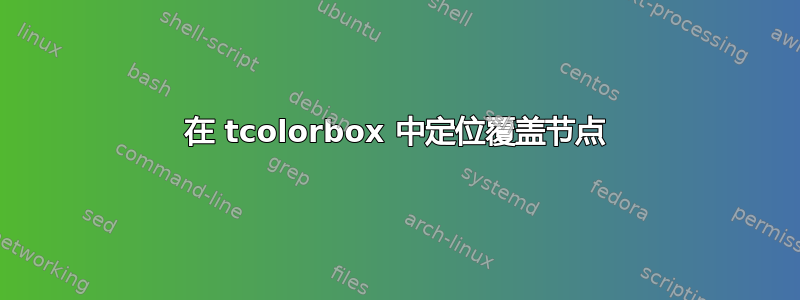
嗨,我正在尝试将这幅青蛙图像移到 tcolorbox 上方,或者可能将其剪辑到 tcolorbox 的“下方”,并显示为裁剪。抱歉,我没有使用 tikz 和节点的经验。主要文档如下
\documentclass{article}
\usepackage{geometry}
\geometry{
a4paper,
total={170mm,257mm},
left=20mm,
right=20mm,
top=20mm,
bottom=17mm
}
\usepackage{fancyhdr}
\usepackage{pgfplots}
\pgfplotsset{compat=1.15}
\usepackage{mathrsfs}
\usetikzlibrary{arrows}
\usepackage{amsmath, amsthm, amssymb, amsfonts}
\usepackage{thmtools}
\usepackage{graphicx}
\usepackage{setspace}
\usepackage{siunitx}
\usepackage{geometry}
\usepackage{float}
\usepackage{hyperref}
\usepackage[utf8]{inputenc}
\usepackage[english]{babel}
\usepackage{framed}
\usepackage{tcolorbox}
\usetikzlibrary{patterns}
\usetikzlibrary{positioning}
\usetikzlibrary{calc}
\usetikzlibrary{plotmarks}
\tcbuselibrary{skins}
\usepackage[show,margin=1cm]{cloze}
\clozesetfont{\normalsize}
\clozeset{margin=5mm}
% \clozehide
\setlength\parindent{0pt}
% FROG THING ILY
\tcbset{frogbox/.style={enhanced,
enlarge top by=4mm,
overlay={
\node[anchor=west] at (frame.north west) {\includegraphics[width=16mm]{img/Untitled.png}};
}
}
}
\newcommand{\HRule}[1]{\rule{\linewidth}{#1}}
\renewcommand{\thesection}{5.\arabic{section}}
\setstretch{1.2}
\geometry{textheight=9in,textwidth=5.5in,top=1in,headheight=12pt,headsep=25pt,footskip=30pt}
% ------------------------------------------------------------------------------
\begin{document}
\pagestyle{fancy}
\renewcommand{\footrulewidth}{1pt}
\input{variables}
\fancyfoot[C]{
% –\thepage–\\
\copyright \textbf{ l.imerence}, page \thepage}
% ------------------------------------------------------------------------------
% Cover Page and ToC
% ------------------------------------------------------------------------------
\title{ \normalsize \textsc{}
\\ [2.0cm]
\HRule{1pt} \\
% \includegraphics[scale=0.15]{img/ChatswoodHS_logo.png}
\LARGE \textsc{{HSC Physics}\\[0.6cm] \LARGE{Module 5: Advanced Mechanics}
\HRule{1pt} \\ \vspace*{10\baselineskip}}
}
\author{\copyright \textbf{ l.imerence}}
\maketitle
\newpage
\section*{Copyright}
Except as permitted by the Australian Copyright Act 1968, no part of this document may be reproduced, stored in a retrieval system, communicated or transmitted in any form or by any means without prior permission of the copyright owner.\\ This document is permitted to be used by students and teaching staff of High School for educational purposes only. This document may also be used by other entities who have purchased the document from the copyright owner directly but use of the document in this circumstance is restricted to private study by said entities. It is not to be re-sold for profit or shared without prior permission of the copyright owner. \textbf{EXPLICITLY}, this document may \textbf{NOT} be used by tutoring centres or tutors without explicit permission. Go make your own resources >:(
\section*{Acknowledgements}
I would like to acknowledge the following individuals, publications and institutions.
\begin{itemize}
\item friend: proofread copyright statement despite not learning any legality related content.
\item literally everyone who has helped me learn \LaTeX{}
\item whoever let me into SRC
\item whoever approved the idea of Senior Science Peer Tutoring (thank you, I will put this on my linkedin.)
\item the person who made \verb|tcolorbox| ilysm
\end{itemize}
\section*{SI Unit Table}
\newpage
\tableofcontents
\input{Module 5}
% ------------------------------------------------------------------------------
% Reference and Cited Works
% ------------------------------------------------------------------------------
% \bibliographystyle{IEEEtran}
% \bibliography{References.bib}
% ------------------------------------------------------------------------------
\end{document}
参考Module 5.tex
\section{Projectile Motion}
\newtcbox{\cbox}{colbacktitle=red!50!white, sharp corners}
\begin{tcolorbox}[colback = background-color-box, sharp corners,boxrule=0.2mm,frogbox]
\subsection{Vertical and Horizontal Components of Motion}
\textbf{Module 1 Revision}
\begin{enumerate}
\item A vector is a unit with \cloze{magnitude} and \cloze{direction}, and is denoted as \cloze{$\vec{v}$}
\item Decomposing a vector can be done by breaking it into its \cloze{$x$} and \cloze{$y$} components. These components are perpendicular, and hence, independant.
\end{enumerate}
The SUVAT(pls memorise) equations (which assume constant $\vec{a}$) are listed below:
\begin{align*}
\vec{v}&=\vec{u}+\vec{a}t\\
v^2&=u^2+2\vec{a}\vec{s}\\
\vec{s}&=\vec{u}t+\frac{1}{2}\vec{a}t^2\\
\vec{s}&=\frac{\vec{v}+\vec{u}}{2}t
\end{align*}
\textbf{Introduction to Projectiles}
\begin{enumerate}
\item A projectile is \cloze{any object launched into the air}.
\item We assume for projectiles, that \cloze{no external forces act upon the projectile}
\item \textbf{Horizontal velocity} is given by \cloze{$\vec{u}_{x}=\vec{v}_{x}$} as \cloze{$\vec{a}_{x}=0$}
\item \textbf{Vertical velocity} is given by \cloze{$\vec{v}=\vec{u}+\vec{a}t$}, where \cloze{$\vec{a}=g$}.
%Reduce line width.
\end{enumerate}
\textbf{Assumptions}
\begin{itemize}
\item The only force acting on a projectile is \cloze{gravity, $g$}
\item No \cloze{air resistance (it comes up in 4U Math though)}
\end{itemize}
\subsection{Decomposing a Projectile's velocity.}
\begin{center}
\input{tikz-diagrams/projectile-vectors}\\
Complete the above diagram by including the $x,y$ components of the projectile's velocity and its acceleration. The first one has been done for you.
\end{center}
\end{tcolorbox}



